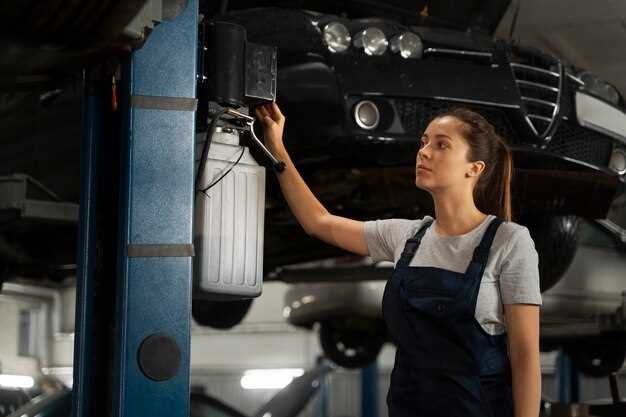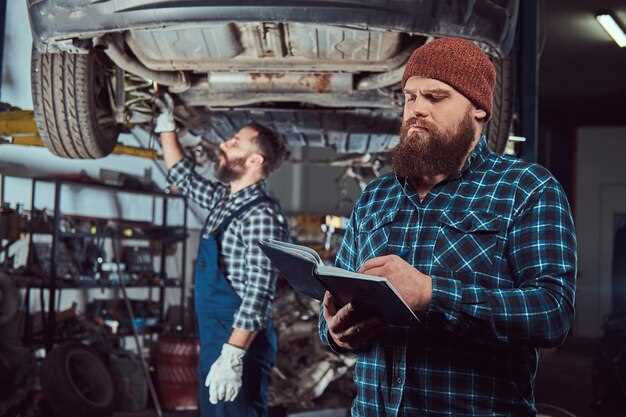
When it comes to owning a classic car, the appeal lies not only in its nostalgic aesthetics but also in the craftsmanship and modifications that may have been applied over the years. The trend of modifying classic vehicles has created a niche market that blends the charm of old with the innovations of modern technology. However, whether you’re a seasoned enthusiast or a newcomer looking to acquire a custom classic car, the process of inspection is critical to ensuring both quality and value.
During the inspection process, it is essential to consider various aspects of the vehicle, particularly how well the modifications have been integrated into the original design. Assessing the structural integrity of the car, the quality of the parts used, and the quality of work performed are all vital steps to ensure that the vehicle is not only aesthetically pleasing but also mechanically sound. Understanding the potential risks associated with poorly executed modifications can save you from costly repairs down the line.
Furthermore, evaluating a classic car’s resale value requires a keen eye for detail. The rarity of certain models, the extent and quality of the modifications, and the overall condition of the vehicle all contribute to its market appeal. A thorough inspection will provide critical insights into whether a particular car is a worthwhile investment or simply a beautiful yet flawed piece of automotive history.
Evaluating the Body and Paint Work of Modified Classics
When inspecting a custom classic car, the body and paint work are critical elements to assess for quality and value. Start by examining the overall body condition for any signs of rust, dents, or poor alignment. Uneven gaps between panels may indicate previous repairs or insufficient craftsmanship, which can affect both aesthetics and structural integrity.
Next, inspect the paint job closely. A high-quality finish should be smooth and consistent, free from drips, orange peel, or bubbles. Look for color depth; a well-applied paint should have a rich, glossy appearance that enhances the car’s classic features. Additionally, check for fading or discoloration, which may suggest inadequate protection against UV exposure.
It’s essential to assess the type of paint used, as some custom classics may utilize modern materials for better durability and protection. Verify that the paint is not only aesthetically pleasing, but also suits the car’s intended use, whether for show or daily driving. Pay attention to potential overspray on windows or trim, which often signifies a rushed or careless application.
Finally, don’t forget to evaluate any custom body modifications. Ensure that any alterations to the original design have been executed correctly, maintaining the car’s integrity while enhancing its appeal. A well-modified classic should balance originality with creative personalization, reflecting quality craftsmanship that adds to its value.
Assessing the Engine and Performance Upgrades in Custom Cars

When inspecting a custom classic car, one of the most critical components to evaluate is the engine. The powertrain not only dictates the vehicle’s performance but also reflects the quality of the modifications made. During the inspection, start by examining the engine’s overall condition, including the cleanliness and absence of leaks. A well-maintained engine bay often indicates that the car has been cared for properly.
Performance upgrades are a significant aspect of custom cars, as they enhance both speed and handling. Check if the engine has been modified with aftermarket parts such as high-performance air intakes, exhaust systems, or turbochargers. These upgrades can increase horsepower and torque but should be matched to the vehicle’s overall setup. For instance, additional power requires corresponding modifications to the transmission and suspension for optimal performance.
Another important factor is the quality of the modifications. Some customizations may be poorly executed, leading to potential reliability issues. Inspect the welds, plumbing, and electrical connections associated with performance upgrades. Ensure that all components are compatible and that upgrades have been installed correctly, as poor-quality work can detract from the car’s value.
Additionally, assess the engine’s tuning. A properly tuned engine will provide smooth operation and maximize performance. Look for a dyno sheet or tuning report which showcases power gains and ensures that the vehicle runs within safe parameters. This documentation can greatly influence the car’s quality perception and resale value.
Finally, don’t overlook the significance of the engine’s documentation. Comprehensive records of modifications, maintenance, and inspection can add value to the car. When considering a custom classic, thorough inspections and a clear understanding of performance upgrades will play an essential role in determining its true value and reliability.
Verifying Documentation and Provenance for Value Assessment

When inspecting a modified classic car, verifying documentation and provenance is crucial for accurately assessing its value. The car’s history is often a significant determinant of its worth in the collector’s market.
Begin by reviewing the vehicle’s title and ensure it matches the VIN (Vehicle Identification Number). Any discrepancies between the title and the car can raise red flags regarding its authenticity and ownership history. Additionally, check for any lien on the vehicle, which could affect its saleability.
Next, gather maintenance records and previous ownership documentation. This information reveals how well the car has been cared for over the years. Regular maintenance and repairs, especially using original or high-quality parts, can enhance value, while a lack of documentation may indicate neglect.
Provenance plays a pivotal role in determining the value of a modified classic car. Research the car’s previous owners, any known modifications, and its participation in car shows or races. Awards or recognition from reputable organizations can significantly boost the car’s desirability.
Moreover, verified modifications can either increase or decrease value based on quality and authenticity. Documented upgrades from well-known builders or customization shops are often viewed favorably. Investigate the specifics of modifications, including their impact on performance, appearance, and overall integrity of the classic vehicle.
In conclusion, conducting a thorough document verification and provenance assessment is essential. This not only aids in determining a modified classic car’s market value but also provides potential buyers with the confidence in their investment.




